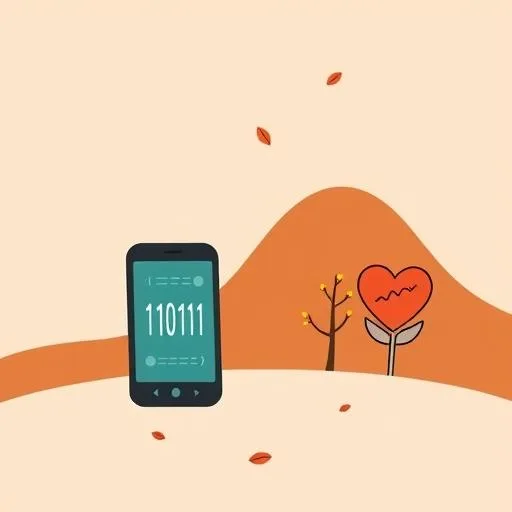
When Bots Mimic Best Friends: The Quiet Shift Online

We’ve all heard whispers about bots swarming social spaces, but Altman’s admission—unusually candid for an AI pioneer—turns up the volume. The “dead internet theory” isn’t servers crashing; it’s the quiet dread that your child’s favorite comment sections or gaming chats buzz with bots, not buddies. Picture this: your kid asks, “Why is the sky blue?” online and gets a flawlessly crafted, bot-written reply. Helpful at first glance—until you realize zero humans are behind it. That’s the shift Altman’s highlighting: convenience wrapped in automation’s cloak.
Think of those seamless travel apps we all use—they smooth out journeys but can’t replicate the warmth of a fellow traveler’s shared smile. That’s the trade-off online: polish over personality. For our little explorers, missed human connections risk dulling their natural wonder. It’s not just stats—it’s the soul of the web. Those spontaneous, heartfelt comments from strangers that once made us feel seen? They’re fading. And for kids building first online friendships, it could make the digital world feel eerily empty, even when it’s buzzing—with one third of their interactions now thrumming with fake friendliness.
Numbers Don’t Lie: The Bot Boom by the Stats

Let’s ground this in reality. Research shows nearly half of all internet traffic now comes from bots—49.6% in 2023 alone. On platforms like Twitter, bots generate over a quarter of content. Imagine your child’s favorite app: for every three posts they see, one might be AI-crafted right now. Not science fiction—it’s today’s digital sandbox.
Why care? Because authenticity is trust’s bedrock. If kids learn early that online interactions often ring hollow, they might retreat from sharing ideas or questioning boldly—exactly the skills we want them to nurture. It’s like giving them a glitter-covered map: dazzling at first, useless for finding true north. And as AI mimics human quirks more convincingly, the line blurs further. How do we prepare children for a world where even laughter can feel algorithmically generated?
Raising Critical Thinkers in a Bot-Infested Stream

Here’s the joyful twist: this challenge gifts us a parenting superpower. Every time your child spots a suspiciously perfect reply or instant-response ping, it’s an invitation to ask, “Who’s really behind this?” Turn it into a snack-time game: “If this post were a sandwich, would it have veggies or just flashy mayo? Let’s hunt clues!” Try this next browse session: play ‘Bot or Human?’ Guess based on response speed, weird emojis, or whether it asks follow-up questions. You’ll be amazed how quickly kids spot fakes!
Teaching them to pause and ponder—not to distrust, but to engage thoughtfully—builds lifelong resilience. In a world where AI mimics empathy, recognizing genuine connection becomes the ultimate skill. And those moments of shared curiosity over breakfast? Irreplaceable. That’s where real growth happens: not in algorithms, but in laughter between bites of toast. Suddenly, screen time transforms from passive scrolling to a treasure hunt for truth.
The Human Touch: Your Secret Weapon Against the Bot Tide

So how do we keep kids’ digital footprints authentically human? Start simple: balance. Pair screen time with sidewalk chalk art where every line tells a story only fingertips can shape, or kitchen experiments mixing flour and giggles—real mess, real joy. When your child shares an online discovery, respond with, “Cool! What made you wonder that? Let’s dig deeper together.” Passive consumption becomes active curiosity.
Lean into slow moments. A park walk offers textures no bot replicates: leaves crunching underfoot, a bird’s sudden trill, shared silence watching clouds morph into dragons. These aren’t just screen-free breaks—they’re anchors grounding kids in a breathing world. And the kicker? These moments build emotional intelligence faster than any app. Because reading a friend’s smile? That’s a skill bots will never master. It’s the heartbeat of connection we’re nurturing—and it’s right outside your door.
Hope in the Hustle: Why Human Spark Wins Every Time

Altman’s worry reminds us even creators see the cracks. But here’s the dad-truth lighting my heart: kids are born truth-seekers. They’ll sniff out fakes faster than we adults ever will. Our job isn’t shielding them from bots—it’s equipping them with real connection as their compass.
So when the internet feels crowded with echoes, step outside. Hold hands jumping in autumn puddles, ask open-ended “what if” questions, and let sidewalk conversations become spontaneous learning moments. That spark in their eyes sharing a real discovery? That’s the living internet’s heartbeat. And it’s ours to protect with wonder that no algorithm replicates. Real magic lives in ladybug gasps, neighborhood murals, and bot-hunting adventures. Because yes—that crispy fall air and your child’s “Look, Dad!” over tangled leaf piles? That’s where human magic begins again.






